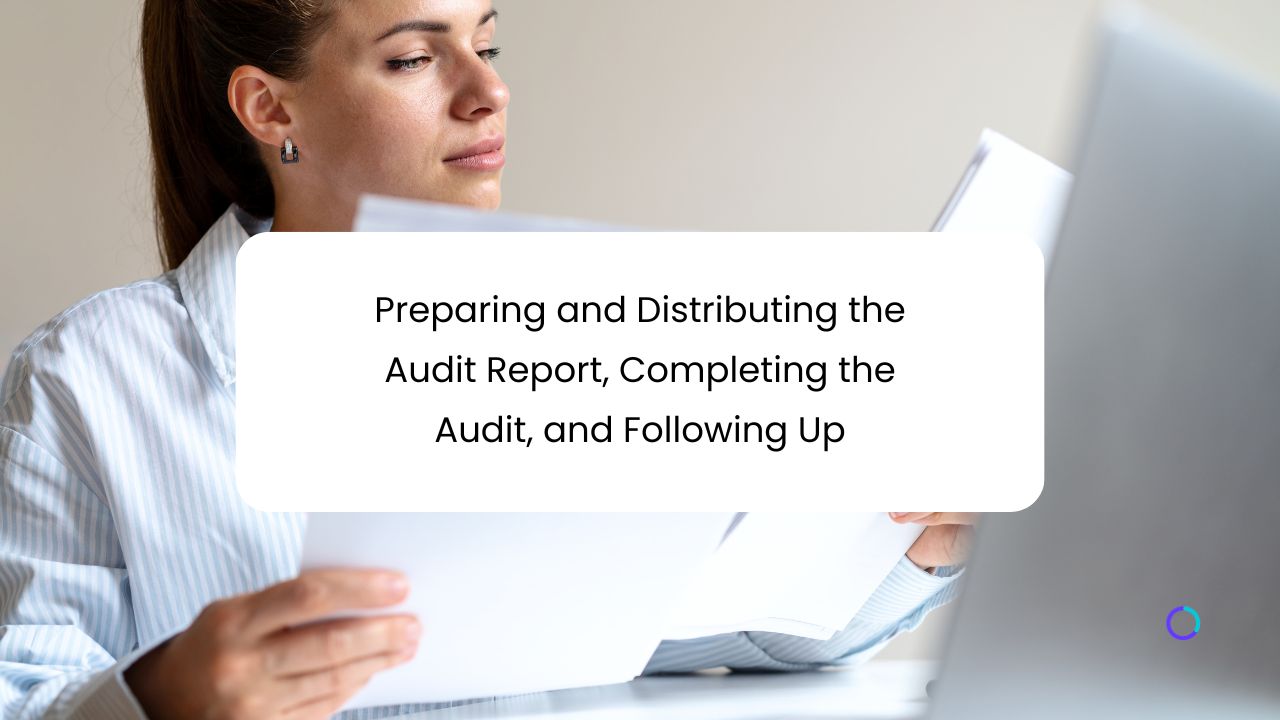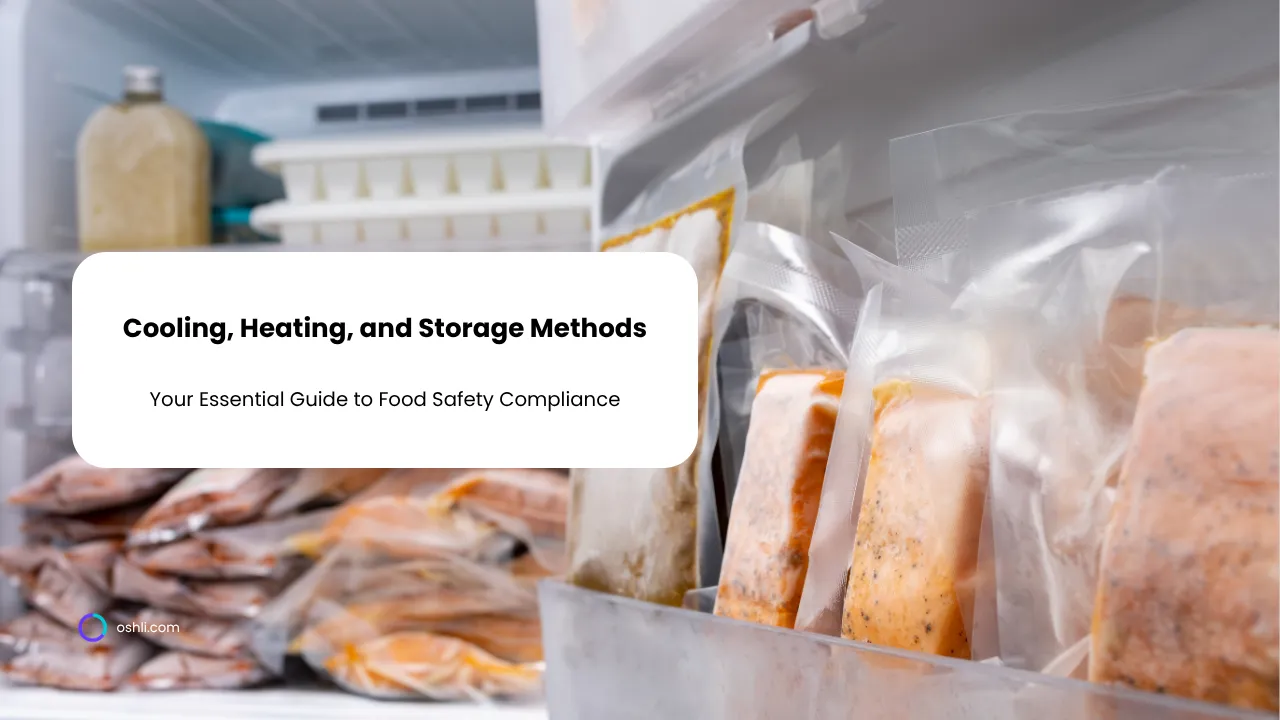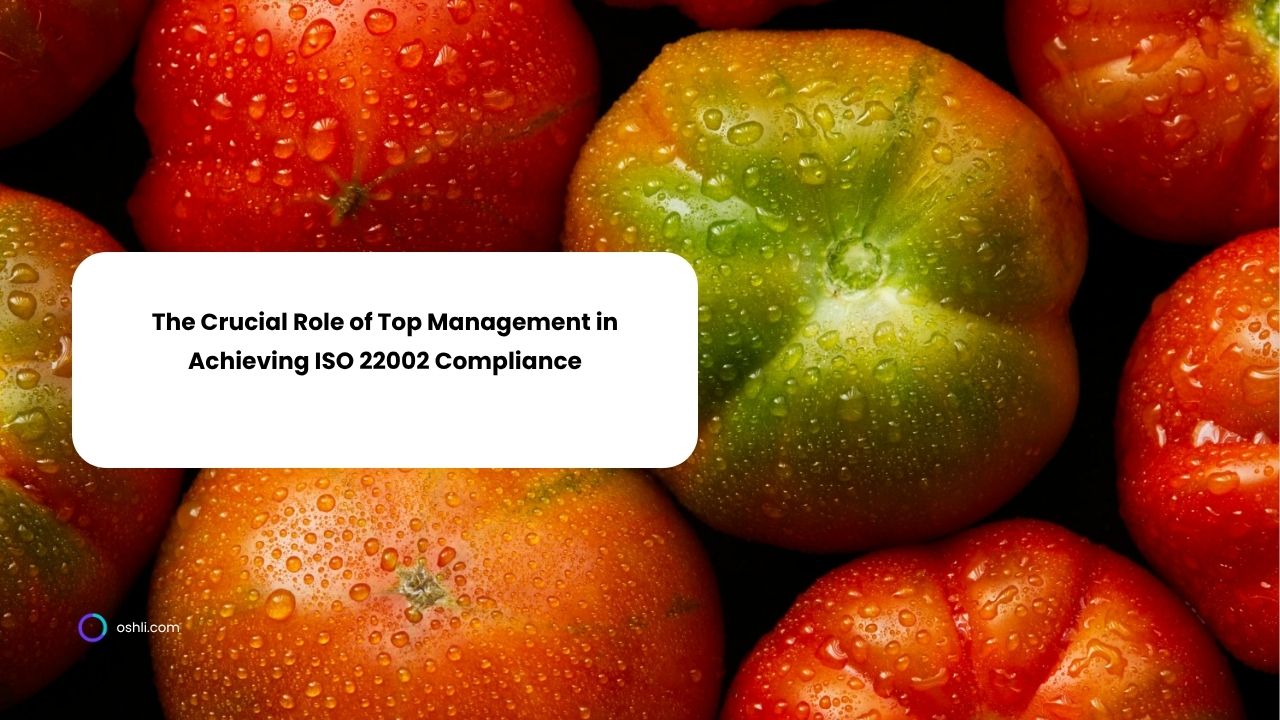
Preparing and Distributing the Audit Report, Completing the Audit, and Following Up
Introduction
In the food industry, audits are indispensable tools that help organizations maintain and demonstrate food safety compliance. Whether you’re operating under ISO 22000, HACCP, FSSC 22000, or any other recognized standard, an effective audit process is key to ensuring that all hazards are identified and controlled. Once the audit fieldwork is done—where auditors review documents, inspect facilities, and interview staff—the real work of finalizing the audit’s outcomes begins.
Two critical steps in concluding any audit are the preparation and distribution of the audit report and the completion of the audit itself. Additionally, audit follow-up activities ensure that any identified non-conformities or improvement opportunities are addressed, while the certification review determines whether the organization meets the necessary criteria for official recognition.
This educational article delves into each of these phases. We will explore best practices for compiling a clear and actionable audit report, distributing it to relevant stakeholders, and wrapping up the audit in a manner that supports continuous improvement. Finally, we’ll discuss how to conduct follow-up and prepare for certification or recertification—critical aspects of any successful food safety management system.
Understanding the Audit Report in Food Safety Management
The audit report is the culmination of all the data collected, observations made, and analyses performed during the audit. In food safety management, the audit report serves as a roadmap for corrective actions and improvements. It helps stakeholders—ranging from senior management to frontline operators—understand where the organization excels and where it needs to bolster its practices.
Key purposes of the audit report include:
- Documenting Compliance: Demonstrating adherence to regulatory requirements (e.g., FDA, EU regulations) and standards (e.g., ISO 22000, HACCP).
- Identifying Non-Conformities: Highlighting areas where processes deviate from documented procedures or fail to meet critical limits.
- Recommending Improvements: Providing actionable guidance on how to enhance the food safety management system (FSMS).
- Facilitating Certification: Serving as evidence for certification bodies or external auditors in subsequent assessments.
A well-prepared audit report can significantly influence management decisions regarding resource allocation, staff training, and policy revisions. Conversely, a poorly prepared report can lead to confusion, miscommunication, and a lack of direction. Hence, investing time and effort into creating a clear, accurate, and concise audit report is essential for any organization committed to continuous improvement in food safety.
Preparing the Audit Report
1. Gathering the Necessary Information
Before drafting the report, auditors should assemble all relevant data:
- Audit Findings: Notes on non-conformities, observations, and positive practices.
- Documented Evidence: Photographs, checklists, sampling results, interview transcripts, and relevant records.
- Previous Audit Records: To confirm whether past corrective actions have been effectively implemented.
- Regulatory and Standard References: Citations to the clauses or requirements that were audited.
The goal is to have a comprehensive repository of information that supports every conclusion or recommendation in the final report.
2. Structuring the Report
An organized structure ensures that the reader can easily navigate the audit findings. Common sections in a food safety audit report include:
Executive Summary
- A high-level overview of the audit’s scope, objectives, and major findings.
- Ideal for senior management who need a quick snapshot of the organization’s performance.
Introduction and Background
- Context about the audit’s purpose (e.g., internal compliance check, certification, regulatory requirement).
- The standard or framework against which the audit was conducted (e.g., ISO 22000, HACCP).
Audit Scope and Objectives
- Detailing which facilities, departments, or product lines were included.
- Stating the main goals of the audit (e.g., verifying allergen control, reviewing CCP effectiveness).
Methodology
- Explaining the audit methods used: document review, interviews, physical inspections, sampling.
- Including any specific checklists or tools employed.
Audit Findings
- The core of the report, listing non-conformities, observations, and areas of excellence.
- Can be broken down by clause, department, or process step.
Recommendations
- Actionable steps for addressing non-conformities and improving the FSMS.
- May include suggested training, infrastructure investments, or policy revisions.
Conclusion
- Summarizing the audit outcome, overall compliance level, and readiness for certification (if applicable).
- Highlighting next steps and follow-up activities.
Appendices
- Supporting documents, data tables, or additional evidence.
- A glossary of terms or references to specific regulations.
3. Writing Clear and Concise Findings
Clarity is paramount in audit reporting. When describing non-conformities or observations:
- Be Specific: Detail the exact nature of the issue (e.g., “A temperature log for the pasteurizer was missing for March 10th” rather than “Records were incomplete”).
- Cite Evidence: Reference the relevant record, photo, or standard clause to support the finding.
- Explain Impact: Describe why the non-conformity matters in terms of food safety risk or compliance.
- Use Plain Language: Avoid jargon that could confuse readers not intimately familiar with audit terminology.
4. Reviewing and Validating the Content
Once the draft is complete, the lead auditor and possibly a peer reviewer should validate the content:
- Accuracy Check: Ensure all data points and references are correct.
- Consistency Check: Confirm that the findings align with the scope and objectives stated earlier.
- Tone and Language: Maintain a professional and objective tone, focusing on facts rather than opinions.
- Stakeholder Review: In some cases, the organization’s management may review a draft to correct factual errors (without influencing the auditor’s independent conclusions).
5. Formatting and Final Checks
A professional layout and standardized formatting improve readability:
- Headers and Subheaders: Help readers quickly locate relevant sections.
- Numbered Findings: Assign a unique identifier to each non-conformity or observation for easy reference.
- Graphics and Tables: Summarize complex data or trends visually (e.g., bar charts of microbial test results).
- Document Control: Include version numbers, approval dates, and distribution lists.
Before finalizing, ensure the report meets any organizational branding guidelines or formatting requirements set by the certification body.
Distributing the Audit Report
1. Identifying the Recipients
Deciding who receives the audit report is as critical as creating the report itself. Typical recipients include:
- Top Management: CEO, COO, or site manager who oversees resource allocation and strategic decisions.
- Department Heads: Quality assurance, production, maintenance, or supply chain managers directly responsible for addressing findings.
- Internal Audit Department: If the audit was external, the internal audit team might also review it for cross-site consistency.
- Regulatory Authorities: In cases where the audit is mandated by law or part of a regulatory submission.
- Certification Bodies: If the audit is part of a certification or recertification process.
Restricting or expanding distribution depends on the sensitivity of the findings. Some organizations may share an executive summary with a broader audience while limiting full details to key stakeholders.
2. Choosing the Distribution Method
In the digital age, multiple methods exist for distributing the report:
Secure Email
- Most common method, but ensure that confidentiality is maintained through encryption or secure attachments.
- Recipients can easily archive, forward, or store for reference.
Online Portals or Document Management Systems
- Tools like SharePoint, Google Drive, or specialized audit management software can store the report.
- Provides version control and controlled access based on user roles.
Physical Copies
- Some organizations still prefer hard copies for regulatory or archival purposes.
- Must be securely stored to protect sensitive data.
The method chosen should align with the organization’s information security policies and the preferences of recipients.
3. Ensuring Confidentiality and Data Protection
Audit reports often contain sensitive information—proprietary processes, vendor details, or internal compliance issues. Therefore:
- Limit Access: Only authorized individuals should view the entire report.
- Use NDAs: If external stakeholders (e.g., consultants, contractors) require access, ensure non-disclosure agreements are in place.
- Classify the Document: Label it as “Confidential” or “Internal Use Only” to prevent unintended sharing.
4. Communicating Key Findings
Merely distributing the audit report is not enough. To ensure action:
Summary Presentations
- Consider holding a brief meeting or webinar where auditors or the audit manager present key findings.
- This allows stakeholders to ask questions and clarify responsibilities.
Action Plans
- Encourage departments to develop corrective action plans for each non-conformity.
- Align these plans with deadlines and assigned responsibilities.
Management Acknowledgment
- Top management should sign off on receiving and understanding the audit report.
- Demonstrates commitment and accountability for addressing findings.
Completing the Audit
Completing the audit involves more than just issuing a report. It requires ensuring that all administrative tasks are finalized, records are properly stored, and the organization’s leadership is fully aware of next steps.
1. Final Auditor Actions
The audit team typically performs these concluding tasks:
- Finalize Workpapers: Securely archive notes, checklists, and any confidential data used during the audit.
- Close Out Open Items: If any clarifications were pending at the time of the closing meeting, address them promptly.
- Evaluate Audit Effectiveness: Internally review whether the audit plan was followed, if objectives were met, and if the scope was adequate.
2. Management Engagement and Sign-Off
Once the report is delivered:
- Obtain Official Acknowledgment: Management should formally acknowledge receipt of the report, often by signing a distribution list or responding to a digital notification.
- Discuss Resource Allocation: Senior leaders may need to authorize budgets or personnel changes to implement recommendations.
- Set Priorities: If multiple major non-conformities exist, management decides which ones require immediate action and which can be addressed in the medium term.
3. Storing Records and Documentation
In food safety management, record-keeping is crucial for traceability and regulatory compliance:
- Digital Archives: Use secure servers or cloud-based solutions with access controls.
- Retention Policies: Follow any legal or certification-specific requirements for how long audit documents must be kept (commonly 2-5 years).
- Backup and Disaster Recovery: Ensure redundancy in storage methods to prevent data loss.
4. Reflecting on Lessons Learned
Post-audit, it’s beneficial to conduct a lessons-learned session:
- What Worked Well: Identify best practices in audit preparation, communication, or methodology.
- What Can Be Improved: Pinpoint bottlenecks or confusion in the audit process.
- Future Audit Strategy: Use these insights to refine the approach for the next cycle, potentially reducing audit fatigue and improving efficiency.
Audit Follow-Up
Audit follow-up ensures that the organization addresses any non-conformities and continues to improve its food safety management system.
1. Corrective Action Plans
For each non-conformity identified, a corrective action plan (CAP) should be developed:
- Root Cause Analysis: Determine the underlying reasons for the issue (e.g., lack of training, inadequate resources, poor process design).
- Action Steps: Outline the tasks needed to correct and prevent recurrence.
- Deadlines: Assign realistic completion dates.
- Responsibility: Specify who is accountable for each task.
A well-crafted CAP not only resolves the immediate problem but also fortifies the organization’s resilience against future lapses.
2. Monitoring and Verification
Once corrective actions are implemented:
- Monitor Effectiveness: Use key performance indicators (KPIs) to measure improvements (e.g., fewer deviations in temperature logs, decreased customer complaints).
- Verify Implementation: Internal audits or spot checks can confirm that the changes are functioning as intended.
- Adjust if Needed: If the corrective action fails to resolve the root cause, refine the plan and continue monitoring.
3. Scheduling Follow-Up Audits
Depending on the severity of the findings, a follow-up audit may be necessary:
- Timing: Minor non-conformities might be checked during the next routine audit, whereas major issues may require an immediate re-audit.
- Scope: The follow-up may focus solely on the non-conformities or re-check the entire FSMS if systemic issues are suspected.
- Reporting: Document all improvements and any remaining gaps to demonstrate progress to stakeholders and certification bodies.
4. Continuous Improvement Culture
An effective follow-up process nurtures a continuous improvement culture:
- Encourage Staff Involvement: Solicit feedback from employees who carry out day-to-day processes.
- Reward Improvements: Recognize teams or individuals who drive successful corrective actions.
- Integrate into FSMS: Update SOPs, training materials, and risk assessments based on lessons learned.
The Certification Review
Many organizations undertake audits with an eye toward certification (e.g., ISO 22000, FSSC 22000, BRCGS). After completing the audit and follow-up, the next step is often a formal certification review.
1. Preparing for Certification
- Gap Analysis: Before a formal certification audit, organizations may perform an internal or third-party gap analysis to identify any shortcomings.
- Addressing Gaps: Implement the necessary changes, ensuring that all major and minor non-conformities are resolved.
- Documentation Update: Align policies, procedures, and records with the latest standard requirements (e.g., updates in ISO 22000 versions).
2. Certification Body Requirements
Each certification body may have unique processes and timelines:
- Application Process: Submit documentation, including previous audit reports, CAPs, and an overview of the FSMS.
- Stage 1 Audit: Often a documentation review to ensure readiness.
- Stage 2 Audit: On-site assessment, where auditors validate the effectiveness of the FSMS in real-world conditions.
Throughout this process, maintain open communication with the certification body to clarify any questions or expectations.
3. Reassessments and Surveillance Audits
Once certified, organizations are typically subject to surveillance audits:
- Annual or Semi-Annual: The frequency varies depending on the standard and the organization’s risk profile.
- Partial Scope: Surveillance audits may focus on high-risk areas or newly implemented processes.
- Full Recertification: Usually every 3 years (for ISO 22000), requiring a more comprehensive assessment similar to the initial certification audit.
Surveillance audits help ensure that the FSMS remains dynamic and effective, adapting to changes in products, regulations, or market demands.
4. Transitioning to New Standards or Versions
Standards evolve over time, reflecting new technological and regulatory developments:
- Plan the Transition: Allocate resources, update documentation, and train staff on the new requirements.
- Gap Assessments: Identify where current practices deviate from the revised standard.
- External Guidance: Certification bodies often provide transition guides, webinars, or workshops to facilitate compliance with updated standards.
Proactive planning for transitions prevents last-minute scrambles and maintains continuous certification status.
Conclusion
The journey from audit planning to report distribution and ultimately to audit completion is integral to any robust food safety management system. By meticulously preparing the audit report, distributing it strategically, and ensuring effective follow-up, organizations can transform audit findings into tangible improvements. This continuous cycle of assessment, action, and review not only fosters compliance with food safety regulations but also drives organizational excellence.
Key Takeaways:
- Preparing a Clear Audit Report: Structure it to include an executive summary, scope, methodology, findings, and recommendations.
- Distributing the Report: Share with the right stakeholders, ensuring confidentiality and clarity in communication.
- Completing the Audit: Finalize records, secure management sign-off, and reflect on lessons learned.
- Audit Follow-Up: Implement corrective actions, verify their effectiveness, and schedule follow-up audits if necessary.
- Certification Review: Align the FSMS with relevant standards, engage with certification bodies, and stay vigilant through surveillance audits.
By treating audits not as a one-time event but as a continuous improvement tool, food businesses can build a culture of safety and quality—a critical competitive advantage in a market where consumer trust is paramount.
Join our newsletter!
Enter your email to receive our latest news.
Don't worry, we don't spam
Related Articles

Guide to Developing a Professional Checklist for ISO 45001 Diagnostic Audits
The ISO 45001 standard establishes a framework for Occupational Health and Safety Management Systems (OHSMS), aiming to enhance employee safety, reduce workplace risks, and create safer working conditions. A diagnostic audit aligned with ISO 45001 is a proactive approach that allows organizations to assess current compliance, identify weaknesses, and prioritize improvements. Central to this process is a professionally structured checklist that ensures consistency, accuracy, and depth in audit execution.

Cooling, Heating, and Storage Methods: Your Essential Guide
Discover how to create a cooling, heating, and storage methods template to ensure food safety, meet compliance, and optimize temperature control with free templates.

The Crucial Role of Top Management in Achieving ISO 22002 Compliance
Explore how top management's leadership drives ISO 22002 compliance, ensuring robust food safety management through commitment, policy, and oversight.


